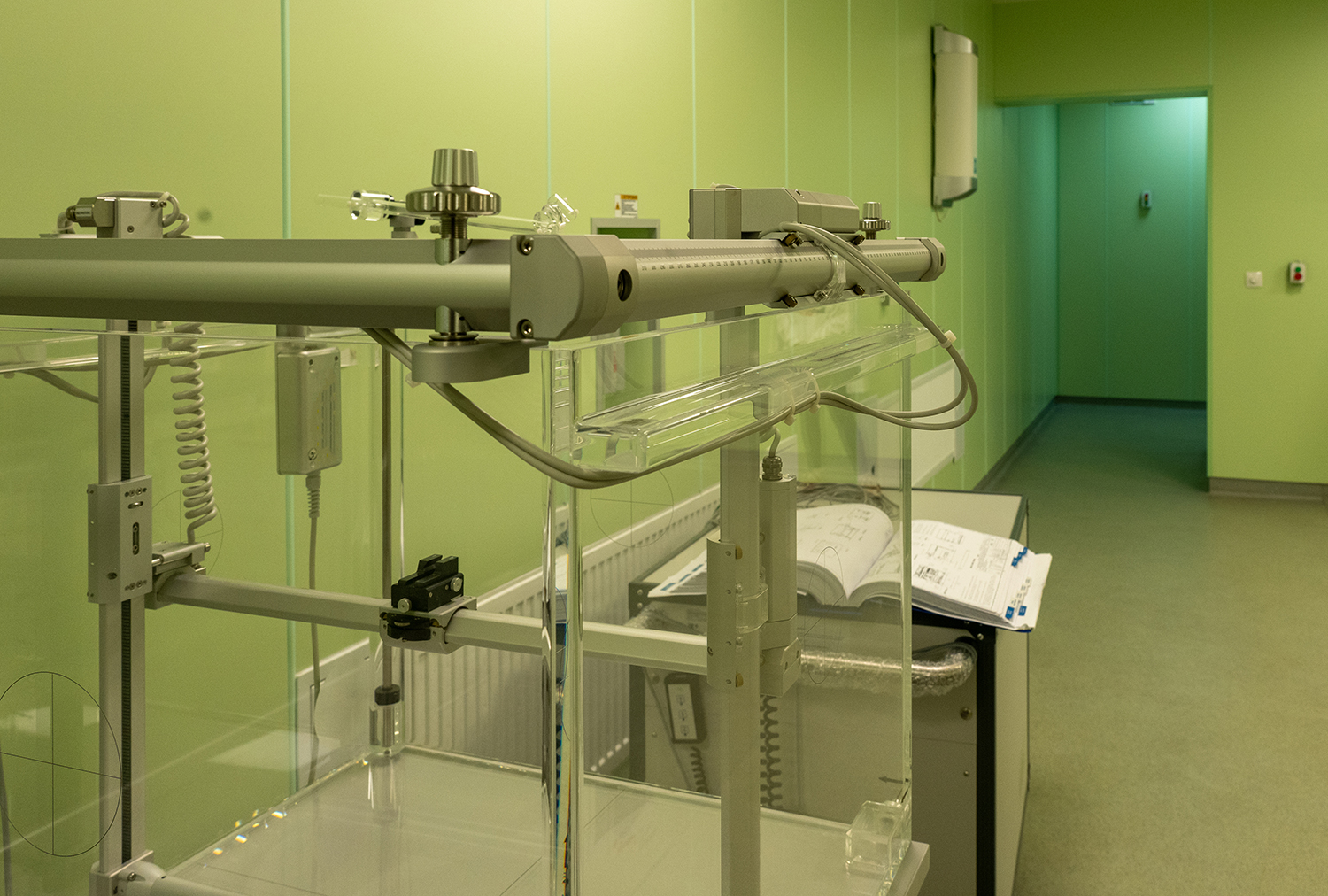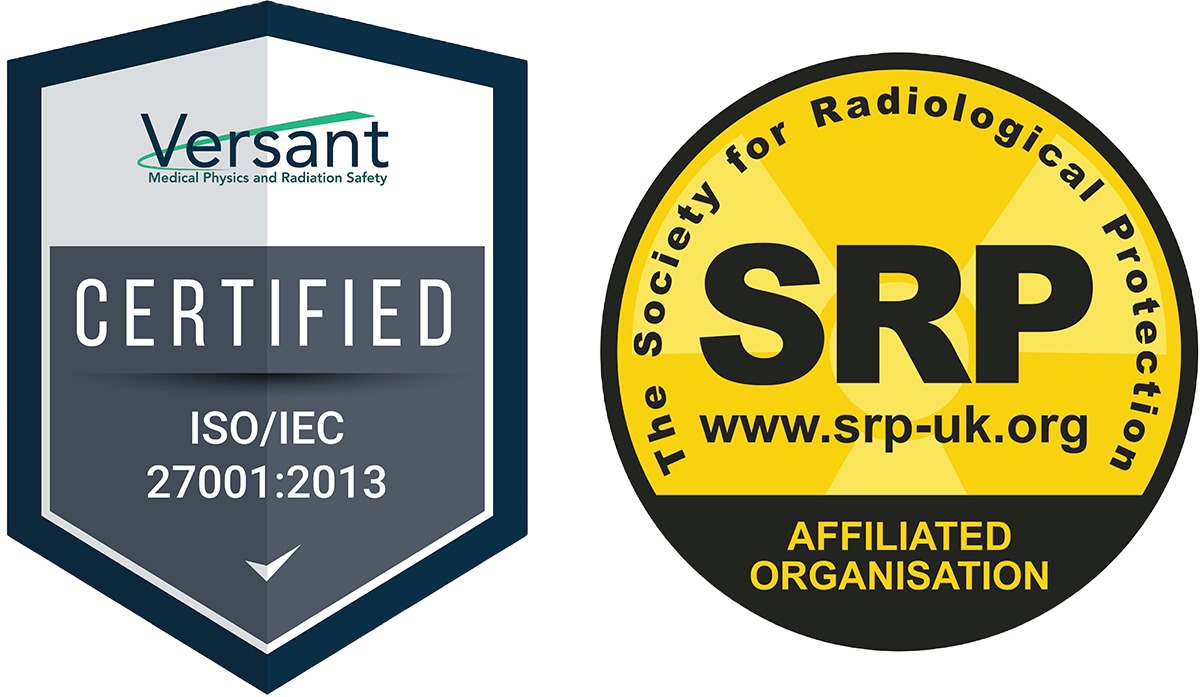Medical physics has been an integral part of medicine and healthcare over the greater part of the last century. Applying physics theory, concepts, and methods, scientists have created patient imaging, measurement, and treatment techniques that revolutionized the medical world. One product of medical physics has been the evolving specialty called radiopharmaceutical dosimetry, the calculation of absorbed dose and optimization of radiation dose delivery in cancer treatment. Today, we address internal dosimetry, the subset of medical physics that aims to optimize treatment and protect the patient from any undesirable side effects.
What is internal dosimetry?
Dosimetry is the measurement of radiation energy imparted to body organs and tissues. Radionuclides emit beneficial ionizing radiation that is useful for both diagnostic imaging of various diseases as well as for cancer treatment. Thus, medical internal dosimetry is the assessment of internal radiation dose from incorporated radionuclides associated with such life-saving radiopharmaceuticals.1 Radiation dose is the amount of energy imparted by radiations emitted during disintegration of radioactive atoms that constitute part of the radiopharmaceutical chemistry. Dose to organs of the body is quantified per unit mass (or weight) irradiated tissue. Dosimetry provides the fundamental quantities needed for several important purposes, including record-keeping, radiation protection decision-making, risk assessment, and cancer-treatment planning.2 The purpose and objective is to optimize medical benefit while minimizing potential radiation damage to body cells, tissues, and organs.
Dosimetry is a complex physical and biological science. Internal dosimetry provides critical information needed to better understand the biological mechanisms governing radionuclide uptake, translocation, and excretion from the body. The radiation dose imparted depends on the type, amount, and distribution of radionuclides, as well as specific nuclear properties, such as energy emitted.
Internal dosimetry differs from “external” dosimetry, which deals with the radiation dose from sources outside the body. Devices such as dosimeters measure external dosimetry directly, while internal dosimetry relies on indirect methods of radioactivity inside the patient using bioassay and imaging measurements.3 Bioassay is the measurement of the activity or concentration of radionuclides in biological samples. Samples can include urine specimens, feces, blood, or breath. Imaging techniques, such as whole-body counters or gamma cameras, can detect the radiation emitted by the radionuclides inside the body. This helps to provide information on their location and quantity.1
When is internal dosimetry used in healthcare?
Internal dosimetry mainly benefits patients who receive radionuclide therapy, a treatment that involves administering radioactively labeled proteins, such as monoclonal antibodies, to target specific types of cancer.3 It also helps to evaluate and account for unique patient variations in biodistribution—the way that different subjects respond to treatment. Internal dose assessments analyze radionuclide behavior in both normal (healthy) organs, as well as tumors. For example, imaging measurements provide physicists with important information to determine tumor uptake, retention, and clearance. In doing so, administered activity can be tailored according to patient health status, age, size, sex, and basal metabolic rates.
How does internal dosimetry produce useful data?
The main challenge of internal dosimetry is to track and follow the uptake, redistribution, metabolism, and clearance of the administered radiopharmaceutical inside the body over extended time periods after administration.4 Tracking sometimes involves mathematical modeling to describe the absorption, distribution, metabolization, and excretion of radionuclides by the body. Biokinetic models may be developed from the study of population groups, knowledge of radionuclide behavior in different organs, and the unique chemistry of each radiopharmaceutical. Biokinetic models incorporate mathematical compartments representing a particular organ or a tissue, and descriptions of the transfer rates that reflect the movement of radionuclides from one body compartment to another.1
Summary
Internal dosimetry is an important tool for radiation protection, especially in the fields of nuclear medicine, occupational health, and environmental monitoring. Dosimetry helps to customize or personalize nuclear medicine in cancer patients. In a broader sense, internal dosimetry is also applied to occupational and environmental health to prevent or reduce the exposure to radionuclides, by providing information on the sources, pathways, and levels of intake, and by suggesting appropriate measures, such as respiratory protection, contamination control, or dose limits. Internal dosimetry can also help to verify the adequacy of workplace controls, to demonstrate regulatory compliance, and to provide medical and legal evidence in case of accidental or intentional exposure.
Special software tools have been developed for the clinical nuclear medicine setting to facilitate medical imaging and calculate internal doses.
QDOSE® Multi-purpose Voxel Dosimetry (Personalized Dosimetry in Molecular Radiotherapy) is a complete, one-stop solution software for all internal dosimetry needs with multiple parallel workflows. With USFDA 510(k) clearance granted in August 2023, QDOSE® has proven its quality and compliance. To learn more, visit our QDOSE® webpage or schedule a meeting with our team.
Sources
- Sudprasert W, Belyakov OV, Tashiro S. Biological and internal dosimetry for radiation medicine: current status and future perspectives. J Radiat Res. 2022;63(2):247-254. doi:10.1093/jrr/rrab119
- Bartlett R, Bolch W, Brill AB, et al. MIRD Primer 2022: A Complete Guide to Radiopharmaceutical Dosimetry. Society of Nuclear Medicine & Molecular Imaging; 2022.
- Chapter 7 External and Internal Dosimetry. Accessed November 15, 2023. https://www.nrc.gov/docs/ML1121/ML11210B523.pdf
- What is Internal Dosimetry – Definition. Radiation Dosimetry. Published December 14, 2019. Accessed November 16, 2023. https://www.radiation-dosimetry.org/what-is-internal-dosimetry-definition/





